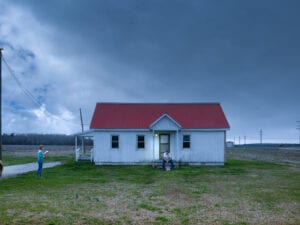The US had the largest area of genetically modified crops worldwide in 2019, at 71.5 million hectares, followed by Brazil with a little over 52.8 million. The most commonly genetically modified crops are soybeans, corn, cotton and canola, and there has been much debate about the risks and benefits of GM foods, both in terms of health and wider impacts on environment and biodiversity. Zane Priede is an Art Director, Photographer and Set Designer based in Riga, Latvia. The Continuous Gardens series is part of this conversation, asking questions about how plant life might evolve as a result of human interventions.


Priede is passionate about turning ideas and concepts into reality, and these still lifes depict a hopeful view of what fictional future plants might look like. “I’ve been always fascinated and curious about extinct species and discovered that there is a whole lost world of plants behind us, but I’m hoping for an even richer world ahead, a futuristic wonderland.” Flowers bloom from corn, berries cascade from rosebuds and various fruits and vegetables intertwine to make hybrid configurations. Mushrooms grow from sheets of paper and petals thrive on breezeblocks. There’s something playful, yet sinister, about these organisms.


Twisting stems, cabbage leaves and pomegranates are carefully selected and positioned against contrasting jewel-toned backdrops of green, magenta and turquoise. It’s an approach that might bring Dutch Golden Age still life painting to mind. After all, it’s a tradition which many contemporary artists are harnessing – from Ori Gersht to Sharon Core. But there’s nothing historic here; Priede’s creations are set firmly in a bright and alluring future, a dystopia where uncanny plants thrive and mutate before our eyes.


All images courtesy Zane Priede, from Continuous Gardens.





